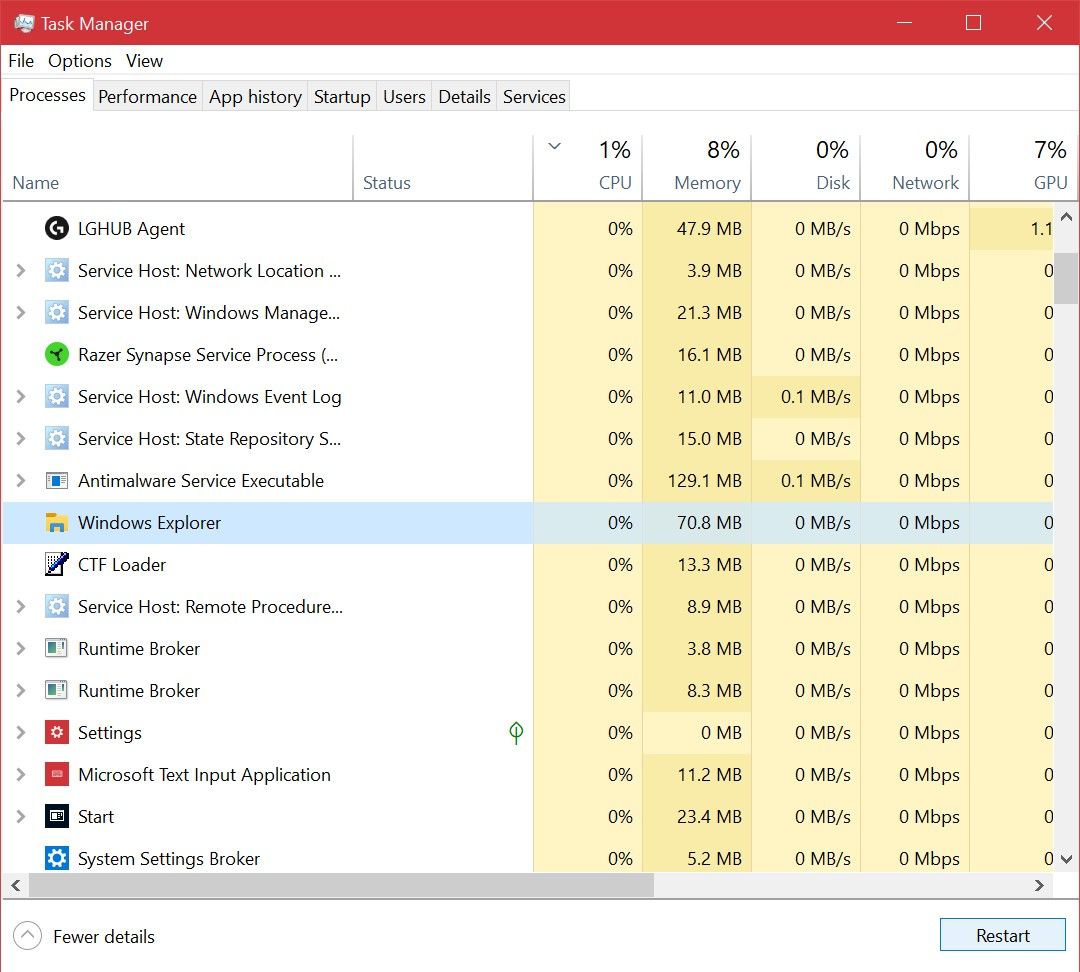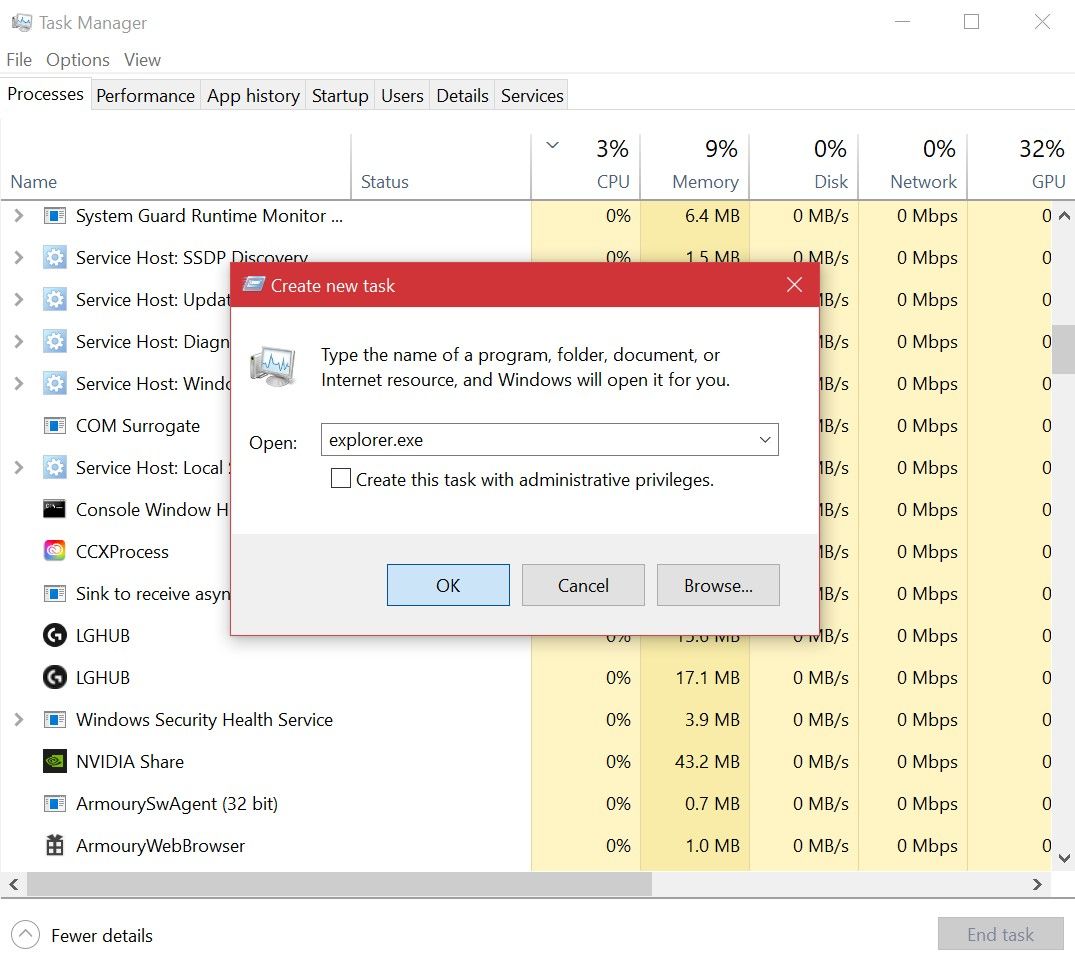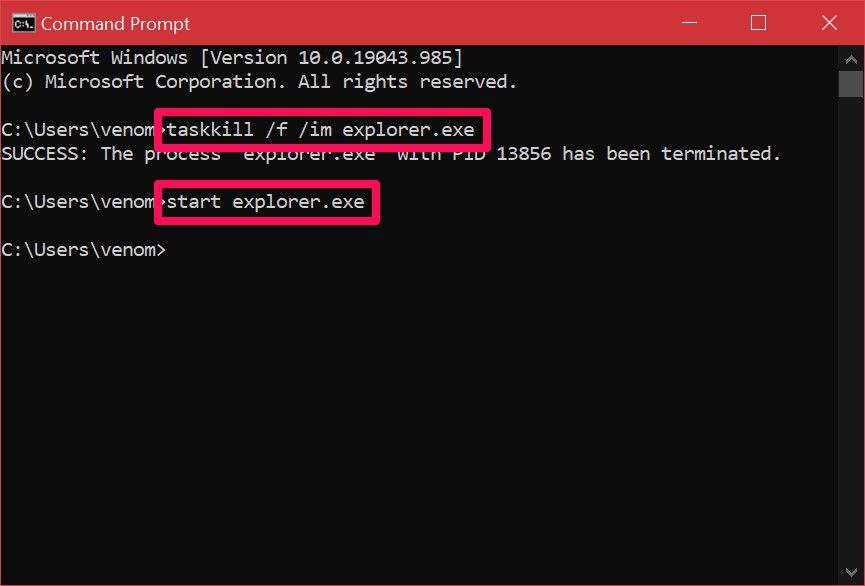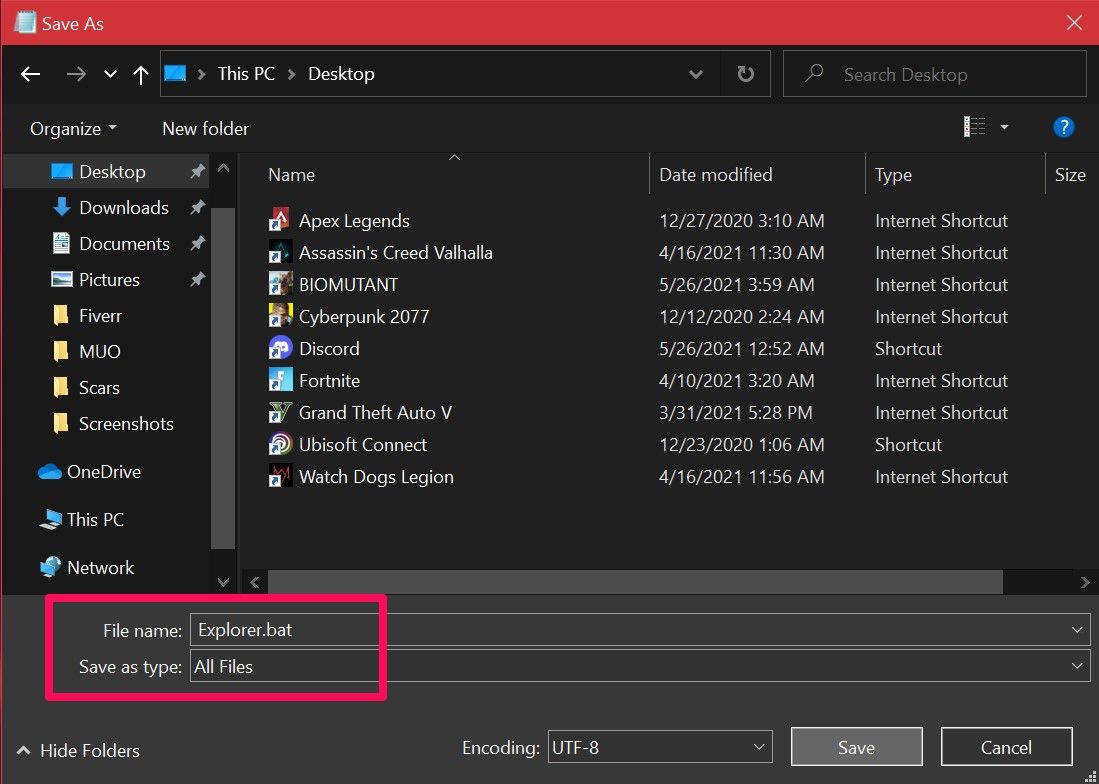How To Relaunch Windows Explorer
Whenever you're facing issues with the Windows user interface, for example, your taskbar isn't responding, or the file navigation seems dull, restarting the Windows Explorer procedure can often set the outcome.
By doing this, you're basically hitting the reboot button for the graphical user interface without having to close down or restart your PC. Here, we'll be taking a look at four unique ways to restart File Explorer in Windows 10.
What Is File Explorer in Windows?
File Explorer is the built-in file managing director for Windows devices. You utilize it to navigate through various directories and browse for files within the operating organization.
If you're someone who switched from a Mac, consider this Microsoft's equivalent of Finder in macOS. You can open a new File Explorer window by simply clicking on the folder icon next to Windows Search.
Having said that, File Explorer starts running in the groundwork as soon as your reckoner boots up. Apart from file direction, it also allows you to interact with the Beginning carte, desktop, and taskbar items.
If File Explorer isn't running on your estimator or crashes, all you'll run into is a black screen. Although you can control your PC with Task Director or Command Prompt, the File Explorer makes it like shooting fish in a barrel since information technology's an integral GUI component.
Before the release of Windows 8, it was referred to equally Windows Explorer. Despite the proper name modify, you'll however run into the older name being referenced in some parts of the Os, every bit y'all'll see below.
1. Restart File Explorer Using the Task Manager
We'll kickoff with the virtually popular way to restart File Explorer.
Task Manager is basically a arrangement monitor that y'all can utilise to beginning or end a process on your computer. These processes tin can be active programs, services, and other tasks that run in the background while y'all use your PC. Additionally, you tin can use information technology to go on an center on hardware resources such as CPU usage, memory usage, and more.
Since File Explorer is a process that always runs in the background, using Task Manager to restart it comes as no surprise. Here'southward what you need to practice:
- Right-click anywhere on the taskbar and selectTask Manager from the context menu to get started. Alternatively, you can printing theCtrl + Alt + Delete keys on your keyboard.
- If you don't see the following window and get the simple view instead, click onMore details. Next, you lot need to ringlet the list of all the active processes and noticeWindows Explorer. Select it and then click onRestart at the lower-right corner of the window.

Your desktop volition become black, and the taskbar will disappear for a split 2d, confirming that the Windows Explorer process has rebooted in your organisation. Subsequently the restart, the interface volition likely feel more responsive if you were facing slowdowns.
ii. Restart Explorer.exe Using Exit Explorer
Do you like to have more control when yous restart File Explorer? Maybe you don't want to immediately restart it because y'all're testing something out on your computer, and yous want it to utilise as few resources as possible.
In that case, you'll find the Exit Explorer method interesting. Here, after ending the Explorer.exe process, nosotros'll manually re-run information technology using the Task Manager.
Permit'south check out the necessary steps:
- Press the Ctrl + Shift keys on your keyboard and correct-click anywhere on the taskbar. You'll get an additional option in the context card. Click Exit Explorer. Your screen will go black, and the taskbar will disappear indefinitely, merely don't panic.
- Now, press the Ctrl + Alt + Delete keys on your keyboard and cullTask Manager from theSign out screen.
- When Task Manager opens, go to File > Run new task from its bill of fare bar.
- You'll now be prompted to enter the name of the process that you want to run. Typeexplorer.exe and click on OK as shown below.

The taskbar and your desktop will reappear on the screen, confirming that File Explorer is once again actively running in the background of your system.
3. Restart Windows Explorer Using Command Prompt
Command Prompt is a program that well-nigh Windows users are familiar with. Information technology'southward the built-in command-line interpreter for Windows devices that lets users perform various tasks on their computers with lines of code.
We'll utilize two carve up commands to kill the Explorer.exe process and offset information technology dorsum upwards in this particular method. It's a manual way to restart File Explorer, just like the previous method.
- Input command prompt in your Start menu search bar and select the Best friction match. Now, to finish File Explorer from running, type the following command and hit the Enter key:
taskkill /f /im explorer.exe - When yous're ready to re-run it, use this command and pressEnter:
start explorer.exe
Afterwards entering the first control, your screen will go blackness, just like the other method. You'll be able to reaccess your desktop once you enter the 2nd command line.
iv. Use a Batch File to Restart File Explorer in Windows
A batch file is simply a evidently text file containing serial of commands that you lot can execute with command-line interpreters like CMD or PowerShell. These files employ the .bat format, and you can access them using Explorer.
When y'all open a .bat file, all the commands stored in it will execute automatically in sequential club. Here, nosotros'll be using the same 2 commands we used in the Command Prompt method, except you'll be storing information technology every bit a batch file on your desktop for easy access.
Follow these instructions to create the batch file:
- Use the Start menu search bar to find and open up the Notepad awarding. Now, type in the following lines of code:
taskkill /f /im explorer.exe
outset explorer.exe
exit - You need to save the file at present. Caput toFile > Save As in the menu bar.
- In this step, gear up the Salve every bit blazon toAll Files and add together.bat at the end of the file name. Select a location that you tin can quickly access, preferably the Desktop binder, and click onSave. This volition save the Notepad document as a batch file.

All you lot need to do correct now is double-click on the file to run the commands. When File Explorer restarts, your screen will become black for a carve up 2nd.
If you shop the batch file on your desktop or pin it to your taskbar, where it'due south easily accessible, this would ideally be the fastest way to restart Explorer.exe on your computer.
Restarting Explorer Made Easier
Now that you lot've learned not i but 4 dissimilar ways to restart File Explorer, it's time to find your favorite method for once. If you're looking for the fastest method, you accept a articulate winner here. But, if you don't want to prepare upwardly a batch file for it, you can e'er go for the popular Job Manager technique.
And, if you desire to finish and showtime the Explorer.exe procedure manually, you can utilize the two other options.
About The Author
Source: https://www.makeuseof.com/ways-to-restart-file-explorer-windows-10/
Posted by: burkeawking.blogspot.com


0 Response to "How To Relaunch Windows Explorer"
Post a Comment